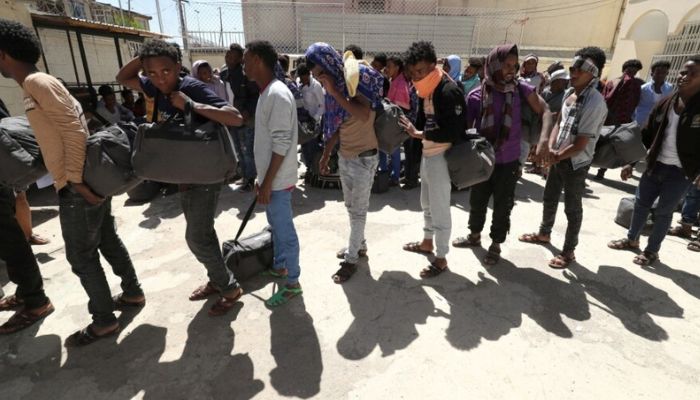The United Nations’ World Population Prospects 2024 report has revealed concerning migration trends in Africa, with several countries experiencing significant net migration losses in 2023.
Net migration refers to the difference between the number of people entering and leaving a country. A negative figure indicates that more people are leaving than arriving. In Africa, factors such as economic hardship, political instability, and conflicts have contributed to this growing migration issue.
Sudan stands out with the largest net migration loss in Africa in 2023, losing 1.35 million people. This figure places Sudan second globally, only behind Pakistan. The ongoing conflict between the Sudanese Armed Forces (SAF) and the Rapid Support Forces (RSF) has driven millions of Sudanese to seek refuge in other countries.
Beyond Sudan, many African nations are facing poor economic conditions, a lack of job opportunities, and political instability, all of which push their citizens to emigrate in search of better prospects. The youth population, in particular, is affected, with many seeking opportunities outside their home countries
This rising trend of emigration poses significant challenges for the affected nations, as the loss of skilled workers and young people may hinder their development. It also underscores the need for international cooperation and support to address the underlying causes of migration and create conditions that will allow people to thrive within their own countries.
Here are the top 10 African countries with the highest emigration rates:
Sudan — Net migration: -1.35 million
Sudan experienced the highest net migration loss in Africa and the second highest globally. The country’s political instability and conflict have forced many residents to flee to neighbouring nations or beyond in search of safety and stability.
Uganda — Net migration: -126,000
Uganda ranks second in Africa and twelfth globally for net migration losses. While the country serves as a host to many refugees, a significant number of its citizens are emigrating due to limited economic opportunities.
Zimbabwe — Net migration: -97,000
Economic challenges continue to drive migration out of Zimbabwe. The sustained outflow of citizens highlights the search for better prospects in neighbouring countries or overseas.
Nigeria — Net migration: -58,000
Nigeria, Africa’s most populous country, also recorded a significant net migration loss. While many Nigerians seek opportunities abroad, the migration trend underscores the need for improved economic and social conditions domestically.
Mali — Net migration: -40,000
Mali’s migration losses reflect the impact of ongoing instability in parts of the country, with many residents migrating to escape insecurity and economic hardship.
Morocco — Net migration: -40,000
Morocco’s position on this list shows the continuing trend of citizens leaving for better opportunities in Europe and other destinations, despite efforts to boost domestic economic prospects.
Tanzania — Net migration: -39,000
Tanzania faces emigration pressures as residents seek better economic opportunities elsewhere, despite the country’s improving development indicators.
Mozambique — Net migration: -36,000
Emigration from Mozambique is often driven by economic hardship and insecurity in parts of the country. The loss of residents highlights the urgent need for sustainable development solutions.
Algeria — Net migration: -26,000
Algeria’s migration patterns reflect a steady outflow of citizens seeking opportunities in Europe. Economic challenges and social factors contribute to this ongoing trend.
Burkina Faso — Net migration: -25,000
Burkina Faso’s position on the list highlights the impact of insecurity and limited economic prospects, which have pushed many citizens to leave the country.


